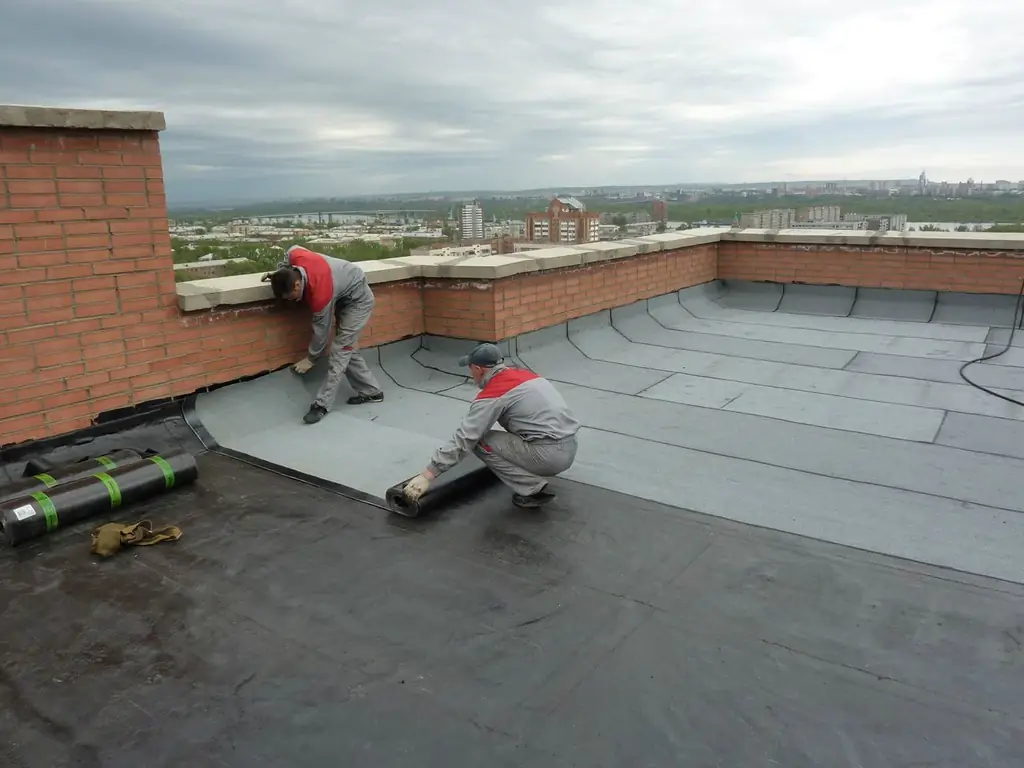
Table of contents:
- Author Bailey Albertson [email protected].
- Public 2023-12-17 12:53.
- Last modified 2025-06-01 07:32.
Types of flat roof repairs and stages of work

A flat roof wins in comparison with a pitched roof in cost and ease of installation. But there is also a drawback: relatively often you have to do repairs. How and with what materials it is carried out - these questions will be the topic of this article.
Content
-
1 Types of flat roof repair
- 1.1 Maintenance
- 1.2 Overhaul
- 1.3 Emergency repair
-
2 Preparing for repair
-
2.1 Selection of materials for the repair of flat roofs
- 2.1.1 Bituminous coatings
- 2.1.2 Bitumen-polymer materials
- 2.1.3 Single layer membranes
- 2.1.4 Roofing mastics
- 2.1.5 Video: repairing a soft roll roof with mastic - what you need to know
- 2.2 Budgeting
- 2.3 Preparing instruments
-
-
3 Flat roof repair technology
- 3.1 Roll material is peeling
-
3.2 Crack or bump appears on the coating
3.2.1 Video: technology for repairing cracks and blisters on a flat roof
- 3.3 Damaged roof membrane
- 3.4 Cracks in the mastic roofing
-
4 Stages of flat roof repair
4.1 Video: repairing a flat roof on the roof of a house
Types of flat roof repair
Roof cover restoration works are usually divided into three categories:
- Maintenance.
- Major overhaul.
- Emergency measures.
Maintenance
Routine repair is a set of works aimed at maintaining the normal condition of the roof: minor damage and defects are eliminated, which may lead to leaks in the future. Usually, the total area of the restored areas does not exceed 40% of the entire roof area, while the repairmen most often limit themselves to manipulating the surface layer.
Problematic areas are identified by inspection, which is recommended to be carried out every six months, in extreme cases - once a year
It is very important to carry out routine repairs in a timely manner, since minor damage on a flat roof quickly develops into large ones, which entails a significant increase in the cost of restoring the coating.
Overhaul
In case of severe wear, when the area of areas with damage or unsatisfactory condition exceeds 40% of the roof area, they resort to a full-scale reconstruction of the roofing pie. In fact, the roof is re-laid, starting with the vapor barrier - only a small part of the materials that are in good condition are reused.

When performing a major overhaul of a flat roof, all layers of the roofing pie are dismantled and re-laid
Emergency repair
Emergency repairs have to be resorted to urgently if the roof is leaking. If current and major repairs are usually performed in the warm season, then emergency repairs are done when necessary, and this is its peculiarity.

In winter, emergency work is carried out to urgently eliminate defects in the roofing
Preparing for repair
During renovation work on the roof, it is often necessary to dismantle the old roof covering. It is clear that at this moment the building loses its protection from precipitation in places, so you need to prepare very carefully so that nothing prevents repairs as soon as possible.
Selection of materials for the repair of flat roofs
For the device and, accordingly, the repair of a flat roof, four types of materials are used.
Bituminous coatings
The category of bituminous materials includes traditional roofing material, which is cardboard coated with bitumen, as well as newer coatings such as metalloizol and foiloizol, which are reinforced with foil.

Folgoizol is a multilayer structure with an external aluminum foil coating
Bituminous waterproofing is the cheapest, but also the least durable - the material becomes unusable after 5-7 years. Such a short service life is due to the following disadvantages:
- low frost resistance - moisture is retained in the pores of bitumen, which, with successive freeze-thaw cycles, gradually destroys the material;
- insufficient plasticity - due to temperature changes, the bitumen coating cracks relatively quickly;
- instability to the effects of ultraviolet radiation (bituminous materials and mastics used for gluing them under the sun's rays become even more fragile).
Bitumen-polymer materials
The addition of a small amount (usually not more than 12%) of various polymers to bitumen makes it possible to increase the frost resistance of the material and its plasticity, as a result of which the service life is extended to 15-20 years. In addition, instead of fragile cardboard, fiberglass, fiberglass or polyester are used as a base, due to which the material acquires increased resistance to mechanical stress.

Rubemast is made using a more modern technology than roofing material, therefore it has several times longer service life
At the moment, a wide range of materials are produced using this technology, for example, bikrost, rubemast, rubestek, hydroglass, glass mat, glass bite, linocrom.
Often among the people, bitumen-polymer materials are called euroruberoid. In addition to increased resistance to negative factors, it has another important difference from roofing material: laying can be done by fusion, for which the lower surface is heated with a gas or gasoline burner.

To fix the euroruberoid, it is enough to warm up its lower layer with a burner - gasoline or gas
At the same time, the euroruberoid inherited some disadvantages from its prototype: it also has to be laid in several layers, while, with rare exceptions, the surface must be sprinkled with stone chips.
The cost of bitumen-polymer materials is higher than that of traditional roofing material, but due to the less frequent repair work, the cost of maintaining the roof is ultimately reduced by 2 times (based on 40-year operation).
Single layer membranes
Single-layer membranes are a fundamentally different type of coating, which is made from synthetic rubber or polymers. It has a number of advantages:
- fits in one layer, so it is mounted very quickly;
- is very flexible;
- has no pores, therefore it has high frost resistance;
- perfectly resists all other negative environmental factors - UV radiation, oxidation and temperature extremes;
- can fit at any time of the year;
- does not require dusting with stone chips;
- Supplied in rolls up to 15 m wide (bitumen material width - 1 m), due to which the number of joints on the roof is significantly reduced.
The membrane can be fastened with glue or bitumen mastic, or with self-tapping screws. Due to the long service life (more than 25 years), single-layer installation and the rare need for repair work, you will have to spend 4 times less money on the maintenance of the roof over 40 years of operation than in the case of a bituminous roof.

Roof repair using a single-layer membrane "Ecoplast" can be carried out at any time of the year
The production of membranes in Russia has been mastered for a long time: the membranes "Kromel", "Ekoplast", Logicbase, "Rukril" and others have proven themselves well.
Roofing mastics
Roofing mastics are liquid formulations that are applied to the roof in any of the following ways:
- spraying (industrial sprayers are used);
- with a brush;
- by the filling method followed by leveling with a roller.
After a while, the mass polymerizes and turns into an elastic waterproof film similar to rubber. Because of this similarity, among the people, roofing mastics are often called liquid rubber. The film is extremely elastic - it does not tear at a relative elongation of up to 1000%. This means that when the building shrinks, the roofing will remain intact.

After polymerization, the roofing mastic turns into a rubber-like waterproof film
In comparison with roll materials, mastics have an important advantage: for any roof area, the coating will be seamless. They are also very useful for repair work, since they allow you to fill the most inaccessible cavities.
Roofing mastics are available in both one-component and two-component versions. In the second case, the main composition must be mixed with a hardener.
The composition of the mastics is quite different, respectively, and their service life is different:
- butyl rubber, for example, "Hermabutyl NMG-S", "Technonikol No. 45", "Polikrov M-120 / M-140" serve 25 years;
- chlorosulfopolyethylene, for example, "Polikrov-L", "Izokrov", "Krovlelit" also protect the roof surface for up to 25 years;
- bitumen-latex, for example, "Technonikol No. 33", "BLEM 20", Master Flex must be renewed every 20 years;
- bituminous rubber, for example, "REBAKS-M", "MGH-K", "Venta U" will require repair after 15 years of operation.
For gluing roll materials you will need bitumen mastic (not to be confused with roofing mastic - "liquid rubber"). You can buy it in the store, or you can make it yourself. There are two varieties of this material:
- cold mastic - used for gluing the inner (lining) layers of roll material;
- hot mastic - applied over the coating as a protective layer and for fixing stone chips.
Cold mastic is prepared from the following ingredients:
- bitumen - 2 parts;
- gasoline - 2 parts;
- filler, which can be used as powder of gypsum, lime or ash - 1 part.
The bitumen is heated in some container and kept for some time so that the moisture completely evaporates from it. The temperature at which the evaporation is carried out is about 180 o C. Then the filler is poured into the bitumen, after which the mixture is thoroughly stirred with a wooden stick. Next, it must be poured into gasoline.
If the bitumen is heated, then it is it that needs to be poured into gasoline, and not vice versa. Failure to do so may result in fire. After cooling, the mastic can be used as directed. It should be borne in mind that it is not stored for a long time, so there is no point in preparing a large volume for the future.
The technology for preparing hot bitumen mastic provides for the cooking of bitumen at a temperature of about 200 o C. During this process, a filler is gradually added, while the bitumen is mixed.

If a small amount of bitumen is needed for repairs, it can be heated in a metal bucket, and for large volumes, special installations are used.
If, when mixing bitumen with a filler, the temperature of the mixture drops below 160 o C, the material will greatly lose quality.
To insulate the roof, a material should be used that is capable of supporting the weight of the coating and snow and at the same time not being strongly deformed. These are:
- extruded polystyrene foam. In composition, it is identical to ordinary foam, only the structure is homogeneous, not granular;
- rigid mineral wool slabs. The density of the material (varies from 50 to 400 kg / m 3) must be selected in accordance with the snow loads characteristic of the region;
- expanded clay. The cheapest, but also the least effective heat insulator.
Video: repairing a soft roll roof with mastic - what you need to know
Budgeting
For large volumes of work, it is useful to calculate the required materials and calculate their cost. Having an estimate in hand, the owner of the building is guaranteed to acquire everything he needs, so that during the repair he will not have to be distracted by minor actions. In addition, the estimate will show what funds will need to be allocated, because with large-scale repairs, the costs can be very significant.
If it is decided to entrust the repair of the roof to a team of hired workers or a specialized company, then they need to provide the following information to draw up an estimate:
-
a drawing of a roof with dimensions, which indicates pipes, shafts and other elements;

Flat roof drawing The roof plan indicates the location of the drainage funnels, ventilation pipes, and also indicates the slope
- photos of damaged areas, or at least their detailed description;
- list of work to be done;
-
brands of materials (roofing, insulation, etc.), which the customer has chosen.

An example of an estimate for the repair of a flat roof The estimate indicates the brand of materials, their quantity, price, scope of work and their cost
Instrument preparation
To carry out the work you will need:
- Mounting cutter. With its help, it is convenient to remove worn-out roofing. This tool can be replaced with a well-sharpened ax, which, instead of an ax, is fixed to a handle made of steel pipe of a suitable length.
- Construction knife. It is used for cutting panels of roofing material.
-
Gas or petrol burner (blowtorch). It is used for fusing bitumen-polymer roll material, if it is decided to use it as a roof covering. It is more convenient to work with a gas burner, and the fuel for it is cheaper. But it is also more dangerous, so in the absence of skills it is better to use a blowtorch.

Roof burner The use of a gas burner requires the roofer to pay special attention to safety rules
-
Building hair dryer. It helps to quickly dry the area being repaired, and can also be used for fusing some materials.

Building hair dryer With the help of a construction hair dryer, you can quickly dry the repaired area or melt the roofing material
-
Maklovitsy. This is the name of the special brushes, with the help of which mastic and primer are applied in the process of roofing. If broomsticks are not available, you can use an old broom instead.

Maklovitsa With a wide brush - with a brush - apply primers and mastics
- Roller. It is used for leveling mastics.
- Protective glasses. According to safety requirements, glasses must be worn when working with a gas burner, as well as when knocking down the screed.
Flat roof repair technology
Each type of defects on flat roofs is eliminated according to its own method.
The roll material is peeling
The sequence of actions is as follows:
- Having lifted the exfoliated fragment, the material located under it is cleaned of debris and dried with a construction hairdryer.
- Having coated the underlying layer with mastic, the exfoliated fragment is glued.
-
The edge of the newly glued area is also coated with mastic.

Peeling of roofing material If the roll material peels off along the seam, moisture and debris accumulate under it, so the place of repair must be well dried and spread with mastic, and then the top layer must be glued
Crack or bump appears in the coating
The easiest way to repair such damage is to install a patch. Before that, you need to determine how deeply the moisture has penetrated into the roofing cake.
-
The area with a crack is cut out with an ax or an assembly cutter, the swelling is opened with a cross cut. If the underlying layer of the roll material is wet, cut it out. Do the same with other wet layers until they reach dry.

Opening a defective roof area An area with a crack or swelling is opened with a cruciform incision
- In the hole formed, as many fragments of the roll material are placed one on top of the other as they have been cut, each glued with mastic.
- If the defect was swelling, then 4 triangular valves, bent after opening, are returned to their place and securely glued with mastic. Some craftsmen use slate nails to nail these valves.
- The roof section within a radius of 10-15 cm from the place of damage is cleaned of debris, dust and dirt, the cleaned area is filled with bitumen mastic.
-
Apply a patch of the appropriate size.

Installing a roofing material patch A layer of mastic is applied to the opened and treated area, and then a patch is laid on it, the edges of which are also coated with bitumen
- The edges of the patch are coated with mastic and sprinkled with stone chips, sinking it into bitumen using a roller.
Taking into account all of the above, many craftsmen prefer to simply lay a new one over the worn-out coating, which is usually called repair in the old way. It should be borne in mind that laying new layers one after another significantly increases the load on the walls. For safety reasons, it is not allowed to lay more than eight layers of coating on the roof, but even with a smaller number of them, it is advisable to calculate the strength of the walls and floors.
Video: repair technology for cracks and bulges on a flat roof
Roof membrane damaged
The single-layer membranes, which were described above, are resistant to weathering, but can be damaged, for example, when removing snow from the roof with a metal shovel. The tightness of such a coating is restored as follows:
- The area around the damage within a radius of 5-10 cm is cleaned of dust and treated with an organic solvent.
- A patch with the dimensions corresponding to the treated area is cut from the spare membrane section.
-
Having laid the patch in place, it is welded with a special heater, while smoothing it with a roller.

Repair of membrane roof defects The patch for the damaged place is welded using a special device, and the joint is then rolled with a roller
If delamination occurs in the seam area, then the delaminated area is welded in the same way, having previously treated it from the inside with a solvent. If the split section is more than 5 m long, then it should be repaired with a special repair tape, for example, Eternbond.
Cracks appeared in the mastic roofing
Cracks in the mastic coating appear as a result of aging of the material. Restoration is carried out with the same mastic from which this coating was made. They act like this:
- Cleans sand and dirt from cracks.
- Pour the mastic into a special spray bottle or pour it onto the surface if you want to treat a small area.
-
Pour mastic into the cracks until they are completely filled.

Liquid rubber roofing repair If the cracked area is small, liquid rubber can be poured onto the surface and then smoothed with a roller.
In case of extensive damage, the repair layer must be reinforced with a fiberglass mesh with a density of 100 g / m 2. First, a layer of mastic is applied with a spray gun, then the mesh is laid and after that, the mastic is applied again, which should completely hide the mesh.
Stages of flat roof repair
Any repair begins with a roof inspection. Here's what to look out for:
- Stone powder has been washed off from some areas (they will be highlighted in color). If at first glance the roof looks as usual, look into the gutters: the washed-off powder remains in them. With its large accumulation, you need to start restoring the coating. Stone chips protect bitumen and bitumen-polymer materials from UV radiation, and without it, they quickly become unusable.
- The material is swollen or flaked in places.
- Cracks are visible.
- There are dents in which water can stagnate. To check, the roof can be poured with a hose and the places where there are puddles can be circled with chalk. Ideally, the water should drain completely from the roof, otherwise it will gradually seep into the room.
-
Rot, mold, or plants are noticed. This is an indirect sign that the water is either often stagnant on top, or has already soaked the cake. It is extremely important to remove the plants immediately, since they can damage even concrete with their root system.

Types of flat roof defects Most of the defects in roofing on flat roofs can be detected by visual inspection
Particular attention should be paid to the areas adjacent to pipes, parapet, ventilation shafts and other objects on the roof
If the damage covers more than 40% of the roof, a major overhaul is performed, which includes the following steps:
- Removal of existing roofing material.
-
Dismantling the screed (bumpers or special machines can be used to cut grooves in the screed).

Dismantling the old roofing Overhaul of a flat roof begins with the complete removal of the old roof covering and the concrete screed underneath
- Removing the insulation.
- Replacement of the vapor barrier or, if possible, its restoration.
- Restoration of elements of the internal drainage system.
-
Installation of insulation. If mineral wool slabs are used in this capacity, you can purchase such varieties that have the slope necessary to ensure the drain (they are called wedge-shaped).

Expansion of a flat roof with insulation When using a wedge-shaped heat-insulating material, the sloping of the roof can be done already at the stage of its insulation
-
Slope of the surface by adding sand or expanded clay (if the slope was not formed by insulation).

Expansion of a flat roof with expanded clay The spreading of a flat roof can be done by pouring a layer of expanded clay on top of the insulation
- Installation of funnels for water drainage (elements of the internal drainage system).
-
Laying the screed from a cement-sand mortar, followed by covering it with bitumen (prevents moisture evaporation).

Screed device on a flat roof Before pouring the screed, reinforcing mesh and wooden beacons are installed on the roof surface
- Laying of roofing material. Bituminous and bitumen-polymer roll materials should be laid in 3-5 layers (the lower the roof slope, the more layers). The strips are laid with an overlap of 10 cm or more, gluing them with mastic. In the first layer, they are laid parallel to the cornice, in the second - perpendicularly, while the ends of the strips of the second layer are wound onto the walls and glued or fixed with dowels. Further, the direction of the stripes in the layers must be alternated.
It is not always possible to unleash correctly. To identify errors, the following test is performed:
- before installing the last coating layer, the roof is filled with water;
- mark with chalk those areas from which moisture does not drain.
After drying, you need to pour a thick layer of mastic into such dents or glue a piece of roll material (no thicker than 1 mm), after which you can lay a finishing layer with stone powder. If there is no powder (ordinary roofing material), it is applied independently on a layer of hot mastic, into which the stone chips are pressed with a roller.
Video: repair of a flat roof on the roof of a house
To reduce the frequency of flat roof repairs, you must initially rely on quality materials. And when servicing, you should protect the coating from mechanical damage - when cleaning the surface from snow and ice, it is not recommended to use a metal shovel or scrap.
Recommended:
Repair Of Metal Roofing, Including A Description Of Its Main Stages, As Well As Material And Tools For Work
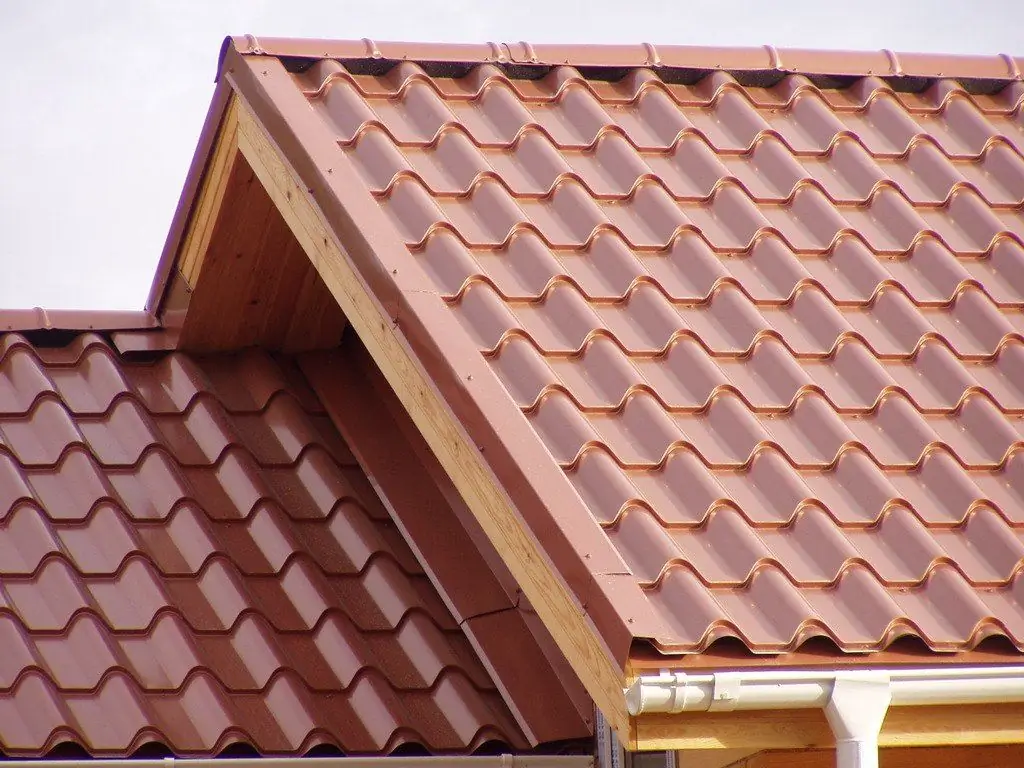
Methods and materials for the repair of metal roofing. What tool is needed and step-by-step instructions for eliminating roof breakages
Repair Of A Soft Roof, Including A Description Of Its Main Stages, As Well As Material And Tools For Work
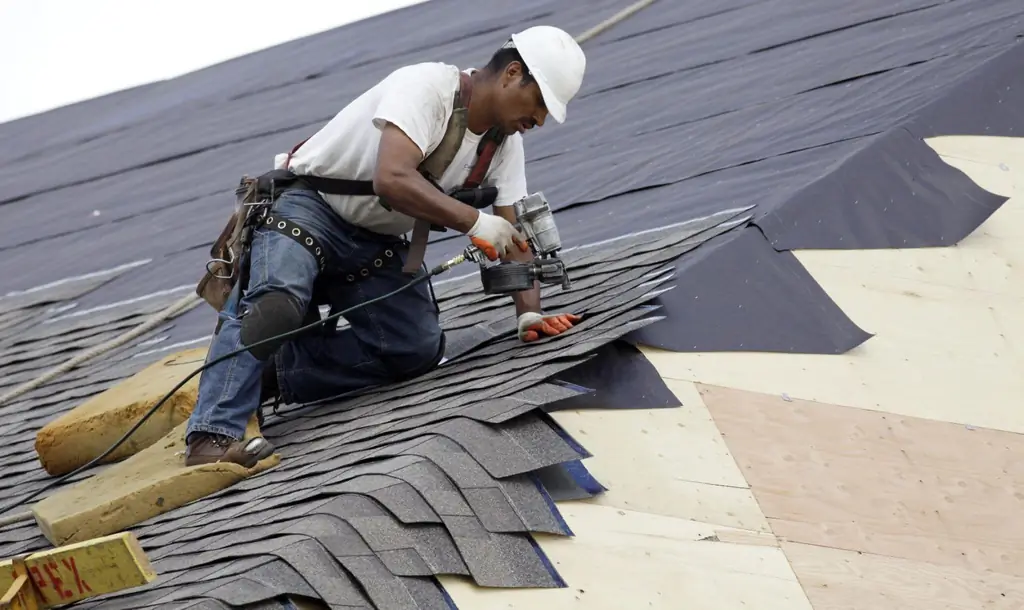
Diagnostics of the condition of the soft roof. Repair types and their main features. A brief overview of roofing materials and recommendations for their selection
Roof Repair, Including Its Various Types With A Description Of The Main Stages Of Work
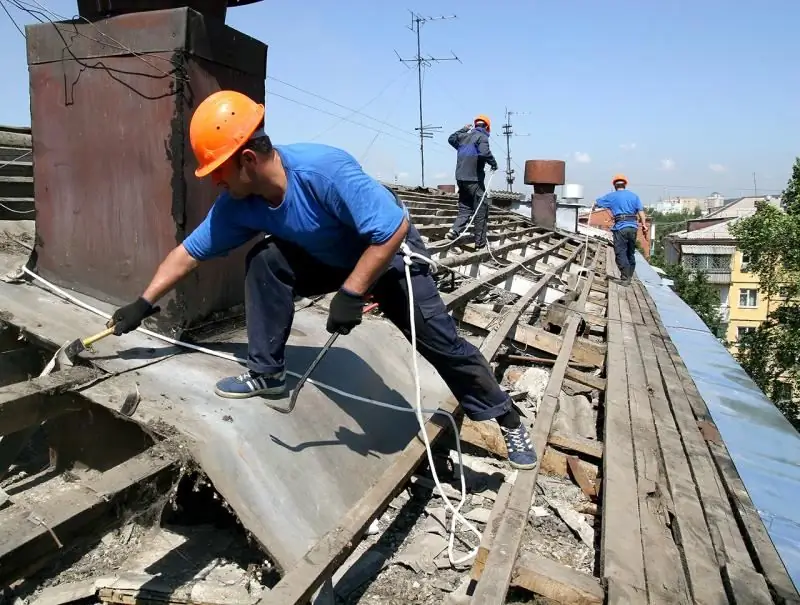
Features of various types of roofing pie repair. Required materials and tools. Step-by-step technology for repairing the main types of roofing
Rolled Roof Repair, Including A Description Of Its Main Stages, As Well As Material And Tools For Work
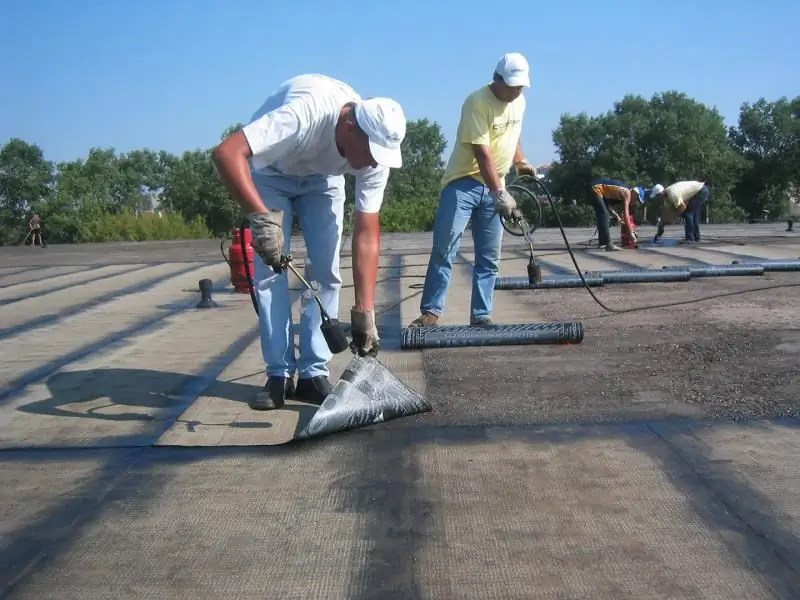
The main types of repair work. Preparation for work and general safety precautions. Step-by-step instructions for performing major and current repairs
Repair Of The Overlaid Roof, Including A Description Of The Technology And Main Stages
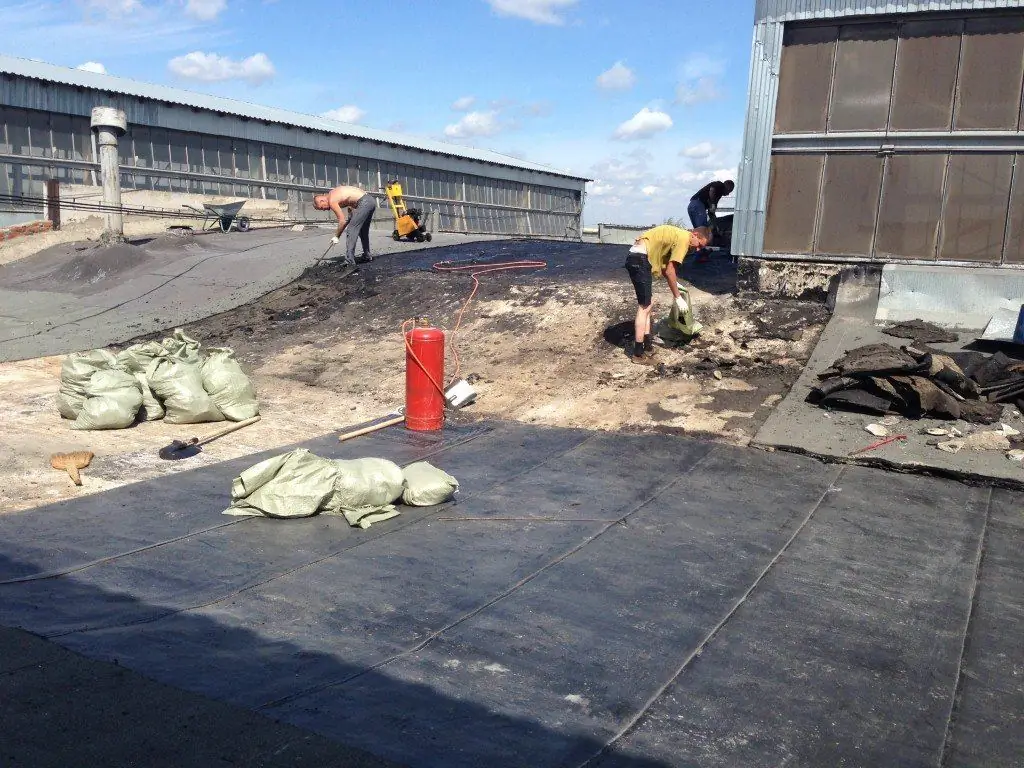
What defects arise during the operation of the deposited roof, the reasons for their occurrence and how to eliminate them. Repair of a roof made of deposited materials
